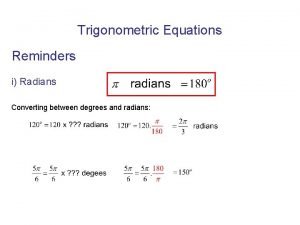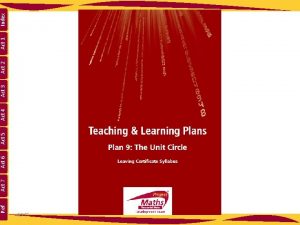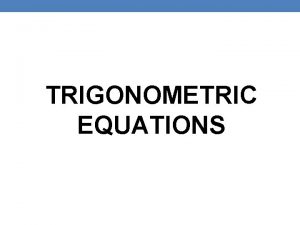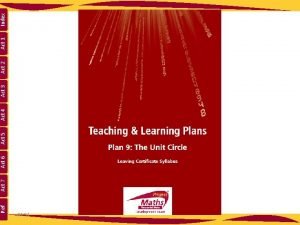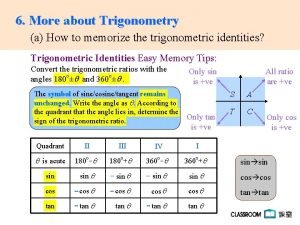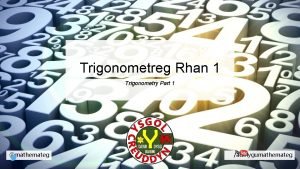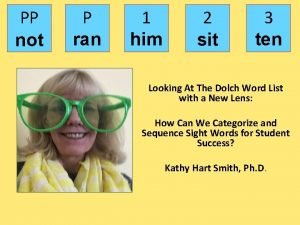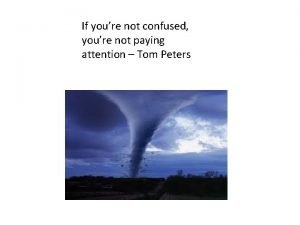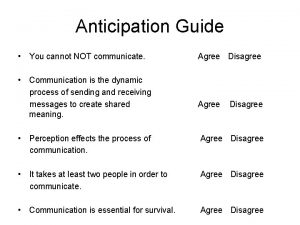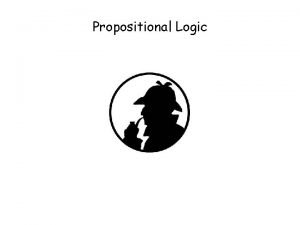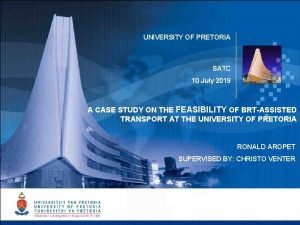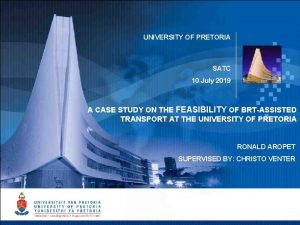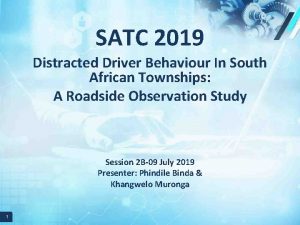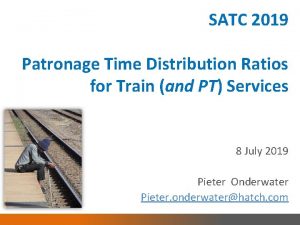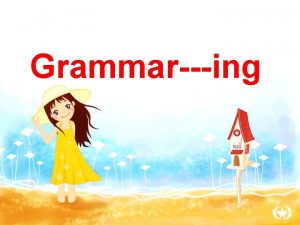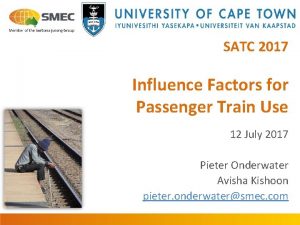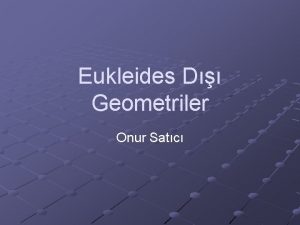SATC 2019 TO D or not to D
















- Slides: 16

SATC 2019 TO D or not to D, that is the question (Possible) Impact of Transit Oriented Development on Public Transport – Case Cornubia 10 July 2019 Pieter Onderwater Pieter. onderwater@hatch. com

Pieter Onderwater (1962) Education: • 1980 – 1988 Technical University Delft: MSc Civil Engineering Traffic & Transport: PT/Rail Planning • 2017 – now University of Cape Town: Ph. D on Rail Planning Work: • 1988 – 1989 Swiss Railway Company, University Delft • 1989 – 2001 Goudappel Coffeng T&T Consultancy • 1992 – 2006 Municipalities of The Hague and Rotterdam • 2006 – 2011 DHV Consultants Rail, the Netherlands • 2011 – 2013 SSI / Royal Haskoning. DHV, South Africa • 2013 – 2018 SMEC, South Africa • 2018 – now Hatch Africa Lecturing: • 2000 – 2010 Deventer, Utrecht techikons, Twente University, the Netherlands • 2012 – now University of Cape Town • 2017 – now University of Namibia

Objective and Methodology Objective of this paper: 1. Investigate the influence on the PT system, of the main TOD factors: – Improved Public Transport – Density – Mixed-Use – Pedestrian friendly design – (others) 2. Theoretical Application: Transit Oriented Planning 3. Case Cornubia Boulevard – Modelling 4. Lessons learned – TOD and PT support each other – Modelling tools are inadequate

Application of TOD • TOD concept originates from 1970/80 s (USA) • (Naturally) applied in Europe – Urban development – Opportunities for planned dev. – Attracts new urban dev. Requires T&T network Spare capacity T&T network High quality T&T network • TOD in South Africa, only in last decade – 2006 – Wilkinson published on it, at SATC – 2011 – National Development Plan – Then – included in (some) local planning policies – Recently – several researchers, SACN, Ph. D/MSc students

Influence Factors of TOD Influence factors • Cervero (1990 s) 3 D • Southern Africa Cities Network (2010 s) 8 aspects 1. 2. 3. 4. – – Improved Public Transport Density Diversity = Mixed-Use Design = Walking network and facilities / Public Realm (Cycling) (Regulating parking, car use, traffic management)

Transportation Assessment 1. Trip Generation – Work, school, other activities, shopping, social, leisure 2. Distribution 3. Modal Split – Walk, Private Transport (Car, Cycle? ) – Public Transport (minibus, train) 4. Assignment – Routes PT operations Individual economic assessment, budgets: money, time, effort. • If quality of transportation system is insufficient, then: – Other mode: Car PT ( cheaper P mode) Walk – Different distribution, other (sub-optimal) activity closer by – Not make the trip at all… • Impacts on Economic and Social activities… Activity Travel Transport Traffic

0. Traditional Planning 0. Traditional Land Use = segregated activities, low densities Traditional PT = unscheduled, low Quality Level of Service – – Often direct services, but in-frequent, slow Long PT trips Small PT units (most efficient) still inefficient, expensive Only attracts Captives • Spend a large proportion of money, time, effort on Transportation…

1. Improved Public Transport 0. Traditional Land Use and PT 1. Improved PT = IPTN = Trunk and Feeder + – – – Some PT improvements: scheduled, frequent, fast (dedicated infra) Still long PT trips, long walking distances from stations / or Feeders Inefficient PT: one-directional, unevenly used, expensive / subsidy Hardly attracting Choice Users • Walking / Feeder cost too much time, effort

2. Higher Density 1. Improved PT = IPTN 2. High Density + – – – More improvements on PT service, better used. PT operations still one-directional, and inefficient Still long PT trips, long walking distances from stations Still not attracting many Choice Users

3. Mixed-Use 2. High Density 3. Mixed-Use Density 4. + Closer Origins and Destinations, some at walking distance + Shorter PT trips, bi-directional + More efficient PT: more evenly used and bi-directional Design Public Spaces for Pedestrians + Right Development Mix: Offices, Facilities, Retail, Leisure + Pleasant walking attracting Choice Users

Additional Benefits of TOD With High Density and Mixed-Use: • smaller catchment area, for activities to be self-sufficient • more activities in reach of population = higher accessibility • Origins and Destinations close by, ‘around the corner’ – More walking trips, less Car and PT – Also activity / trip-’chains’ in lunch-time or after work (off-peak) • Pedestrian friendly environment – Pleasant place to live, work, play – Attracting additional activities / trips also in off-peak • PT and NMT support each other more PT use modal shift • Road network can’t handle high densities, but (as with PT) mixed densities make road network more efficient – Also consider mixed-use Parking • More economic / social activities higher land value

Case Cornubia is a new development, north of Durban Along Improved PT Corridors: • C 9 = Umhlanga – Cornubia – Phoenix – Bridge City • C 8 = Durban – Umhlanga – Cornubia – Airport • Plus additional Local PT routes Dense Mixed Design • First developments already had higher densities higher in recent plans • First plans were only partly mixed Cornubia Boulevard is well mixed

Support by Modelling • Modelling results: – Densification Higher Trip Generation – Improved PT More PT trips, good Assignment on PT network – Efficient PT system, station design, etc.

Modelling was inadequate • However, current Transportation Models hardly cater for TOD assessments 1. Fixed Trip Generation no impact shown of mixed-use (less trips) no results for off-peak 2. Same Distribution function based on historic (traditional) planning little impact of mixed-use 3. No Modal-Split function ‘manual’ fixed impact of improved PT policy parameter = wishful thinking 4. Assignment OK

Conclusions and Recommendations • TOD more off-peak trips, shorter trips, modal shift, more efficient PT • Impact of TOD elements works differently for Captives and Choice Users PT % Low Inc Mid. Inc High Inc Trad. +Impr. PT +Dense +Mix +Design • Recent planning for Cornubia Boulevard includes all TOD elements OK – Include TOD in more areas in Cornubia, elsewhere (where applicable) • Improve Modelling tools: 1. Flexible Trip Generation, depending on Quality of transportation, off-peak 2. Distribution function, based on Accessibility of activities 3. Modal Split, based on Generalised Costs (money, time, effort)

Discussion So, the questions was: And the answer is: TO D or not to D ? TOD ! Any other questions ? Pieter. onderwater@hatch. com .
 Satc trigonometry
Satc trigonometry Satc unit circle
Satc unit circle Satc trig
Satc trig Act 6 act 3
Act 6 act 3 Tan wave
Tan wave Satc trigonometry
Satc trigonometry More about trigonometry
More about trigonometry Satc trigonometry
Satc trigonometry Sadlier vocabulary workshop level d unit 1
Sadlier vocabulary workshop level d unit 1 Too broad too narrow
Too broad too narrow Sit pp
Sit pp If you're not confused you're not paying attention
If you're not confused you're not paying attention You can not not communicate
You can not not communicate If p then not q truth table
If p then not q truth table If you cannot measure it, you cannot improve it
If you cannot measure it, you cannot improve it Informal and casual
Informal and casual Edna st vincent millay love is not all
Edna st vincent millay love is not all
